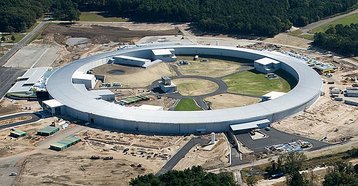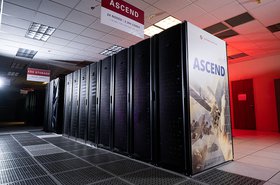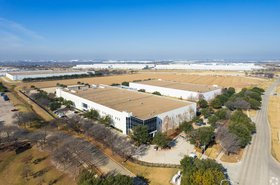The Department of Energy's (DOE) Brookhaven National Laboratory in New York has repurposed a particle accelerator facility into a scientific data center.
Now renovated, the facility is part of Brookhaven's Scientific Data and Computing Center (SDCC) in Upton, Long Island.
The repurposing project required an investment of around $74.85m and was sponsored by the Science Laboratories Infrastructure program of the DOE's Office of Science.
The facility spans 59,000 sq ft (5,481 sqm) and was previously the National Synchrotron Light Source (NSLS) facility, which was home to Nobel Prize-winning research. The facility has been unused, however, since the NSLS-II opened in 2015.
According to a report Finalizing Transition the New Data Center at BNL, construction of the NSLS data center was completed in Q3 2021 and became operational in Q4 2021. Despite this, the transition process has been ongoing since.
By the end of 2022, the data center had 54 active storage and CPU racks which included a set of racks serving the NSLS-11. This was expected to increase to 106 racks by the end of 2023.
Of the 135 racks at the old data center, only 20 were physically moved to the NSLS building, the rest were retired and replaced.
According to the SDCC's website, the final phase of migration to the new data center location was in December 2023, with periods of downtime across two days expected. The statement adds: "This event marks the final phase of the years-long migration of SDCC services from the old data center to the new one."
No further major migrations of equipment and services are expected to occur between 2024 and 2027.
The NSLS building is a Tier III quality data center and meets the RAS requirement of the SDCC Facility. The report goes on to add that all critical data processing equipment is supported by fully redundant infrastructure, that the data center is fully self-sufficient and capable of operating without utility power or the BNL's campus chilled water for prolonged periods of time.
It has been designed to a target PUE of 1.2, and has an IT capacity of 9.6MW at full build-out across IT floorspace of around 1,600 sqm (17,000 sq ft).
Equipment in the data center is split between three rooms: a dedicated tape library room, network room, and main data hall. The latter is split into two sections: one for high-throughput computing and the other for high-performance computing.
The data center is available to scientists working on a number of projects in physics, biology, climate, and energy research for both data analysis and storage. These include experiments on the quark-gluon plasma to mimic early matter of the universe, analyzing structures of materials at the NSLS-II, and describing properties of nanomaterials.
In addition, the SDCC is supporting international research including the ATLAS experiment which looks to understand the building blocks of matter at the Large Hadron Collider in Switzerland and the SuperKEKB particle accelerator in Japan.
The SDCC has been at Brookhaven Lab since 1997, developed at the same time as the Relativistic Heavy Ion Collider and ATLAS Computing Facility. It was originally called RACF.
Brookhaven National Laboratory was formally established in 1947 at the site of Camp Upton, a former US Army base and Japanese internment camp. It is managed by Stony Brook University and Battelle Memorial Institute.








